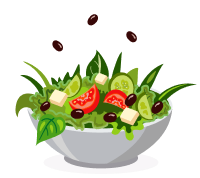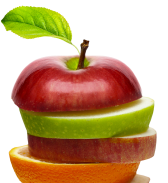Table Of Contents
Introduction on How to Get a Bigger Butt – Booty Basics
In a world where pop culture icons and social media influencers have put the spotlight on shapely derrieres, many are looking for ways to improve their own assets. But how can you transform your tush from flat to fab? You’re in the right place if you’re on the quest for a bigger, rounder, and firmer booty.
We’ve got some exciting news if you want to transform your cottage cheese ass. You’re about to discover a treasure trove of tips and tricks designed to sculpt, lift, and plump your peach. We’ll delve into the science of glute growth, share the best butt-boosting exercises, and even explore how the proper diet can help you achieve a fuller, rounder booty. Still with us? Great!
So, if you’re ready to turn heads with a killer backside, read on – your journey to an enviable butt starts here!
Proven Methods on How to Grow Your Butt: The Growth Guide
Many people’s fitness objectives include developing strong, well-defined glute muscles, but doing so requires knowledge of the science underlying muscle growth and diet’s role in the process.
- Muscle growth, or hypertrophy, involves an increase in the size of muscle cells. This process is stimulated by mechanical tension, muscle damage, and metabolic stress during resistance training. You make small tears in the muscle fibers when you exercise a muscle. The body repairs these tears during rest, leading to muscle growth.
How can I make my buttocks bigger naturally? This is where the idea of progressive overload comes in handy; gradually raising the weight or resistance over time will keep the muscles challenged and encourage growth.
Nutrition is also necessary for both muscle growth and repair. The building blocks for muscle and the energy required for exercise are found in proteins, carbs, and fats. Specifically, protein is essential because it supplies the amino acids needed to synthesize muscle protein.

Including Progressive Overload & Resistance
If you want to see quick and long-lasting results from your exercise, you must include resistance training and progressive overload. This can be accomplished by varying the exercise intensity, progressively adding weight, or adjusting the volume and frequency of your workouts.
Scientific research confirms how to gain weight in your butt – progressive overload effectively promotes muscular hypertrophy, which means that the size of your glutes increases.
Also, read – What to Do Before Working Out
Common Question & Misconception
- Do protein shakes help build glute muscles?
Yes, if your dietary protein consumption is inadequate, protein shakes might be a practical approach to make sure you get enough protein to support muscle building.
- Are cardio exercises beneficial for building glute muscles?
Cardio exercises can support overall fitness but are less effective than resistance training for muscle growth. Incorporating some cardio can help with fat loss, potentially making the glutes more prominent, but it should not replace targeted resistance exercises.
How to Get a Bigger Butt Without Exercise? Effortless Enhancement
1. Nutrition
- Increase caloric intake to have enough energy for workouts
- Focus on macronutrients, especially protein for growing your glutes
The foods you eat can influence the shape and size of your buttocks. Consuming protein-rich foods can promote muscle growth and repair, even without exercise.
Fish, eggs, almonds, seeds, legumes, and other protein-big booty foods help create a fuller posterior, but of course, in combination with exercises, the result will be better.
2. Posture
Adjusting your posture can make your butt appear larger and more lifted.
- Focus on keeping your back straight and shoulders back and engaging your core muscles.
This adjustment can naturally accentuate your buttocks.
3. Supplements
While there’s limited evidence to support the efficacy of supplements in directly enlarging the buttocks, some believe supplements like maca root and fish oil can contribute to fat distribution and increased muscle mass when combined with other methods.
4. Clothing Choices
The proper clothing can give the illusion of how to get a smaller butt or a bigger butt. High-waisted jeans, for instance, can accentuate your waist and make your buttocks appear larger. Similarly, form-fitting dresses can highlight your natural curves.
Shapewear is another option that can instantly give the appearance of a fuller, more lifted butt.
Keep your expectations reasonable. Body form and fat distribution are determined mainly by genetics, and without specific muscle gain through training, the alterations may be mild. Gaining weight through diet and lifestyle changes may increase the size of your butt, but it won’t have the same impact as toning and growing your muscles through exercise.
Also, read – The Ultimate 6 Day Workout Split
Must-Try Tactics on How to Get a Bigger Butt Fast – Rapid Your Results
1. Squats
To increase the intensity, add weight with a barbell or dumbbell. Focus on depth and form to engage the glutes fully.
2. Lunges
For added resistance, hold dumbbells in each hand. Ensure your torso remains upright throughout the movement to effectively engage the glutes.
3. Hip Thrusts
To prevent injury, ensure your chin remains tucked and your spine neutral. Focus on squeezing your glutes at the movement’s top for maximum engagement.
4. Deadlifts
Keep the bar close to your body to improve form and reduce the risk of injury. Engage your core and squeeze your glutes at the top of the movement.
Complementary Cardio & Strength Training
In addition to specific glute exercises, incorporating other cardio and strength training forms can be beneficial. There are excellent cardiovascular exercises that also target the glute muscles:
- Cycling
- Stair stepping
- Jumping rope
These activities help burn fat and contribute to the overall shaping and toning of the buttocks.
How to Get a Fat Butt: Best Practices for Safe and Effective Training
- Warm-Up Properly
Start each workout with a 5-10 minute warm-up to loosen your muscles and reduce the risk of injury.
- Focus on Form
Prioritize proper form over lifting heavier weights to maximize muscle engagement and minimize injury risk.
- Rest and Recover
Allow adequate recovery time between workouts to enable muscle repair and growth. Aim for at least 48 hours of rest for the targeted muscles.
- Nutrition and Hydration
Eat a well-balanced, high-protein diet to help in muscle growth and repair. Hydrate well to maximize output and recovery.
Also, read – Pre Workout Breakfast to Help You Get Fit
Does Squats Make Your Butt Bigger? Get to Know the Truth
Squats are a popular exercise known for their ability to engage several muscle groups, including those in your lower body and core. But do they actually make your butt bigger? The answer is both yes and no.
- Generally, squats, step-ups, and lunges are recommended exercises for toning the lower body. These ones target the glutes (the muscles in your butt), which can lead to an increase in muscle size and definition over time.
However, the effect of squats on your butt’s size also depends on your body type, genetics, and overall fitness level. As pointed out in Strength Training for All Body Types: The Science of Lifting and Levers, becoming stronger in compound movements like squats can improve bone density and strength. Still, it might not necessarily lead to a significant change in physical appearance for everyone.
Week-long Wonders: Super Program on How to Make Your Butt Bigger in a Week
Day 1: Strength Training (Focus on Glutes)
- Warm-Up. 5-10 minutes of light cardio (jogging, skipping) followed by dynamic stretches.
- Main Workout
Barbell Squats: 4 sets of 8-12 reps
Romanian Deadlifts: 4 sets of 8-12 reps
Hip Thrusts: 4 sets of 8-12 reps
Bulgarian Split Squats: 3 sets/10 reps on each leg
- Cool Down. Stretch focusing on glutes and lower back.
Day 2: Plyometrics & Cardio
- Warm-Up. 5-10 minutes of dynamic stretching.
- Main Workout
Jump Squats: 3 sets of 15 reps
Box Jumps: 3 sets of 10 reps
Lateral Band Walks: 3 sets of 15 reps on each side
High-Intensity Interval Training (HIIT) on a treadmill: 20 minutes
- Cool Down. Light jogging and stretching.
Day 3: Active Recovery
Light walking, yoga, or swimming focuses on mobility and flexibility. No intense workouts.
Day 4: Strength Training (Focus on Compound Movements)
- Warm-Up. Light cardio and dynamic stretches.
- Main Workout
Deadlifts: 4 sets of 8-12 reps
Walking Lunges: 4 sets/10 reps per leg
Step-Ups: 4 sets of 10 reps each leg
Glute Bridge: 4 sets of 15 reps
- Cool Down. Stretch for a plump butt focusing on the glutes, hamstrings, and quads.
Day 5: Glute Isolation & Core
- Warm-Up. 5-10 minutes of light cardio.
- Main Workout
Cable Kickbacks: 4 sets of 12 reps on each leg
Single-Leg Deadlift: 3 sets of 10 reps on each leg
Abductor Machine: 4 sets of 15 reps
Planks: 4 sets of 1 minute
- Cool Down. Full body stretching.
Day 6: HIIT & Cardio
- Warm-Up. Dynamic stretching.
- Main Workout
Treadmill Sprints: 10 rounds (30 seconds sprint, 1-minute walk)
Stairmaster: 20 minutes at a challenging pace
- Cool Down. Light stretching focuses on the legs and glutes.
Day 7: Rest and Recovery
Focus on recovery techniques such as:
- foam rolling
- massage
- light walk
Ensure you’re hydrating well, and consider a gentle yoga session to enhance flexibility and promote muscle recovery.
Recovery
- Sleep. Aspire for 7-9 hours of quality sleep per night to support recovery and muscle growth.
- Stress Management. Incorporate stress-reduction approaches such as meditation or deep-breathing exercises.
Also, read – How to Workout With a Busy Schedule
Foods for Bigger Butt and How Much Do You Need? The Full Plate
The science behind the relationship between nutrition and butt size is quite clear: your buttocks are composed of muscle and fat, and the foods you eat can influence the growth and shape of these tissues.
1. Proteins
Proteins are the building blocks of muscles. They help repair and build new muscle tissue when combined with exercise.
How to get wider hips – For inactive individuals, 0.8 grams of protein/kilogram of body weight should be consumed daily; however, if you’re an active person or attempting to grow muscle mass, you may need more protein.
2. Carbohydrates
Carbohydrates provide energy for your body and replenish glycogen stores in your muscles, promoting growth.
According to the Dietary Guidelines for Americans, 45–65% of your day-to-day calories should come from carbs.
3. Healthy Fats
Healthy fats are essential for synthesizing hormones and can be stored in the buttocks, affecting their size and form.
The Dietary Guidelines for Americans suggest that 20-35% of your daily calories should come from fats.
Also, read – Sweet Potatoes: The Nutritious Superfood You Need to Try
10 Superfoods That Grow Your Butt: Healthier Weight with Healthier Choices
It’s a full protein containing all nine basic amino acids required for muscle restoration and growth.
They’re high in complex carbohydrates and excellent for energy replenishment and sustained release, essential for powering through those glute workouts. They also provide dietary fiber, aiding digestion and nutrient absorption.
- Eggs
Eggs are a fantastic start to healthy fats and high-quality protein. The yolk contains essential elements that promote muscle building.
- Salmon
Wealthy in omega-3 fatty acids, salmon helps reduce inflammation, facilitating quicker recovery post-exercise.
- Greek Yogurt
Greek yogurt is excellent for muscle recovery and growth. It is packed with protein and rich in calcium. It also contains probiotics, ensuring you absorb the maximum nutrients from your diet.
- Spinach
Spinach is loaded with iron and magnesium, crucial for muscle health and recovery. This food that goes straight to your bum also contains nitrates, shown to improve muscle efficiency during workouts.
- Chickpeas
Chickpeas are a fabulous source of plant-based protein and carbohydrates. They’re excellent for muscle maintenance and growth, providing essential amino acids and fiber.
- Nuts and Seeds
Almonds, flaxseeds, chia seeds… – are rich in protein and contain healthy fats that support muscle growth. They’re great for snacking or adding extra calories and nutrients to meals.
- Avocado
It’s high in monounsaturated fats, which can help you gain mass in your buttocks.
- Lean Beef
Lean beef is a superior source of high-quality protein, iron, and B vitamins essential for muscle growth.

What to Eat to Grow Glutes? Drinks to Glute Growth Grub
- Protein Shakes
Try mixing whey protein with fruits, yogurt, or milk. A study has shown that consuming protein shakes after resistance training can increase muscle growth and strength gains.
- Milk
Milk is rich in protein and carbohydrates, making it an excellent post-workout recovery drink. Additionally, it contains casein, a slow-digesting protein that helps with muscle repair overnight. Research supports this, indicating that milk enhances muscle protein synthesis and aids in body fat loss.
- Tart Cherry Juice
Tart cherry juice is learned for its anti-inflammatory effects, which can help speed up recovery and reduce muscle soreness after a tough workout.
- Green Tea
Green tea is filled with antioxidants and has been found to increase fat burning, which can indirectly aid muscle growth by reducing fat mass. This study uncovered that green tea extract can enhance exercise-induced fat oxidation.
- Water
Last but certainly not least, water is crucial for proper muscle function and recovery!
20 Snacks for Bulking Up Your Butt: Catch Top Ideas
- Greek yogurt with honey and berries
- Almond butter and banana smoothie
- Cottage cheese with pineapple chunks
- Hard-boiled eggs
- Track mix with nuts, seeds, and dark chocolate
- Hummus and whole-grain pita bread
- Sweet potato fries baked with olive oil
- Edamame sprinkled with sea salt
- Roasted chickpeas with olive oil and spices
- Beef jerky
- Whole milk cottage cheese with peaches
- Whole wheat toast with avocado and poached egg
- Salmon and cream cheese on whole grain crackers
- Greek yogurt with granola and fresh fruit
- Whey protein shake with mixed berries
- Baked beans on whole-grain toast
- Nut butter stuffed dates
- Shrimp cocktail
- Baked sweet potato with Greek yogurt and cinnamon
- Cottage cheese with sliced almonds and honey
Wendy is a Registered Dietitian with a passion for writing about nutrition, health, and medicine. Her aim is to translate the medical jargon to make information accessible to everyone so that they can make informed decisions about their health.
Education:
BSc. Dietetics (UKZN) (1994 - 1998)
Post-Graduate Diploma: Dietetics (UKZN) (1999)









